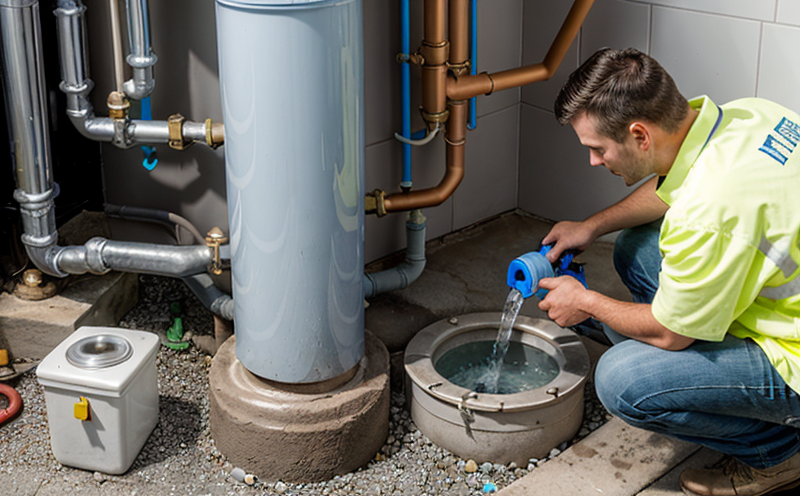ISO 5667-7 Water Sampling Storage
The ISO 5667-7 standard provides a framework for the sampling and storage of water intended for human consumption or other specified uses. This service is critical in ensuring that water samples are collected, stored, and handled according to best practices, thereby maintaining integrity and reliability throughout analysis.
Water sampling and storage play a pivotal role in the quality control processes within the building & infrastructure sector. Compliance with ISO 5667-7 ensures that water testing laboratories can provide accurate, reliable results which are essential for verifying the safety and potability of water systems. This service is particularly relevant for plumbing and water system testing where the integrity of the sample directly impacts downstream decisions regarding public health.
The standard outlines specific requirements for the selection of sampling containers, the methods used to collect samples, and the storage conditions that must be adhered to in order to prevent contamination or alteration of the sample. It also defines acceptance criteria which allow laboratories to determine if a sample has been compromised during collection or storage.
The first step in this process is the selection of appropriate sampling containers. These containers should be made from materials that do not interact with the water being sampled, such as polyethylene or glass. Once collected, samples must be stored under controlled conditions to prevent microbial growth and chemical changes. Temperature control is especially important; samples are typically kept at room temperature (15°C - 25°C) unless specified otherwise.
The standard also provides guidance on the use of preservatives if necessary, such as sodium thiosulfate or nitrate, to inhibit biological activity in certain types of water. However, the addition of preservatives can sometimes affect analytical results and therefore must be used judiciously. It is essential that any preservative added does not interfere with subsequent testing.
Proper labeling of samples is another critical aspect of this process. Each sample should be clearly labeled to include information such as the date and time of collection, location where collected, the type of water being sampled (e.g., potable, industrial), any preservatives used, and a unique identifier for traceability.
When storing samples, it is important to ensure they are protected from light, heat, and other environmental factors that could lead to degradation. Samples should be stored in a cool, dark place with controlled humidity levels if necessary. For extended storage periods, additional measures such as refrigeration or freezing may be required.
The acceptance criteria for samples collected according to ISO 5667-7 vary depending on the specific type of water and intended use. Generally speaking, a sample is considered acceptable if it has been handled in accordance with all prescribed procedures from collection through storage. Any deviation from these procedures could lead to unacceptable results.
Water sampling and storage are not just technical processes; they are also regulatory requirements. Compliance with ISO 5667-7 ensures that your water testing meets both internal quality control standards as well as external regulatory requirements, enhancing confidence in the integrity of your test results.
Industry Applications
- Water Quality Monitoring: Ensuring that water samples are collected and stored correctly to provide accurate data for monitoring compliance with drinking water standards.
- Construction Projects: Verifying the potability of water sources before construction begins or during the installation of new plumbing systems.
Why Choose This Test
Selecting this test ensures that your water samples are handled in a way that maintains their integrity and reliability, which is crucial for accurate and actionable results. By adhering to ISO 5667-7 standards, you can demonstrate compliance with relevant regulations and industry best practices.
- Enhanced Accuracy: Proper sampling and storage methods reduce the risk of sample contamination or degradation, leading to more accurate test results.
- Improved Compliance: Ensures that your water testing aligns with international standards, facilitating compliance with local regulations and industry requirements.
Use Cases and Application Examples
- Drinking Water Compliance: Ensuring that water samples from municipal sources meet regulatory standards for potability.
- New Construction Projects: Verifying the suitability of water supplies before installation of plumbing systems in new buildings.
- Retail Establishments: Checking the quality of water used by restaurants, hotels, and other commercial facilities to ensure it meets safety standards.





